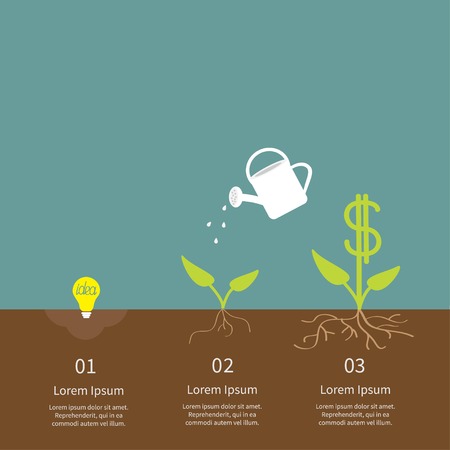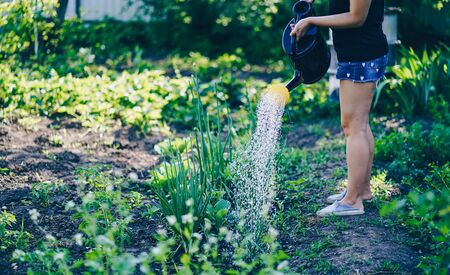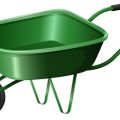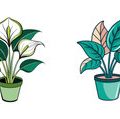1. What Are Plant Hardiness Zones?
If youre new to gardening in the U.S., one of the first things youll hear about is “plant hardiness zones.” These zones help gardeners figure out which plants are most likely to thrive in their area based on climate—especially winter temperatures.
Understanding the USDA Plant Hardiness Zone Map
The United States Department of Agriculture (USDA) created a map that divides the country into 13 different plant hardiness zones, each based on the average annual minimum winter temperature. The map is updated periodically using weather data collected over time. Each zone covers a 10°F range and is further divided into “a” and “b” subzones with a 5°F difference.
Example of USDA Hardiness Zones
| Zone | Average Annual Minimum Temperature (°F) |
|---|---|
| 3a | -40 to -35 |
| 4b | -25 to -20 |
| 6a | -10 to -5 |
| 8b | 15 to 20 |
| 10a | 30 to 35 |
Why Hardiness Zones Matter for Gardeners
Knowing your hardiness zone helps you choose plants that can survive local winter conditions. For example, if you live in Zone 5, planting something rated for Zone 8 might mean it won’t survive your colder winters. On the flip side, if you’re in Florida’s Zone 10, a plant meant for cold climates might not get the chill it needs to grow properly.
How to Find Your Zone
You can easily look up your zone by entering your ZIP code on the USDA’s official Plant Hardiness Zone Map website. This tool is especially helpful if youve recently moved or want to start a garden from scratch.
2. How to Identify Your Hardiness Zone
If youre getting serious about gardening, knowing your USDA hardiness zone is one of the first steps to choosing plants that will thrive in your area. The United States Department of Agriculture (USDA) developed a system that divides North America into 13 zones based on average annual minimum winter temperatures. Each zone is further divided into “a” and “b” subzones, which give even more precise guidance.
Using Your ZIP Code to Find Your Zone
The easiest way to find your hardiness zone is by entering your ZIP code into an online lookup tool. The USDA provides a free Plant Hardiness Zone Map, where you can type in your ZIP code and get instant results. Many gardening websites and plant retailers also offer similar tools that automatically match you with your correct zone.
Example ZIP Code Lookup
| ZIP Code | City | Hardiness Zone |
|---|---|---|
| 90210 | Beverly Hills, CA | 10b |
| 60614 | Chicago, IL | 6a |
| 10001 | New York, NY | 7b |
| 73301 | Austin, TX | 8b |
| 98101 | Seattle, WA | 8b |
What the Numbers and Letters Mean
The number part of your zone (for example, 6 or 9) refers to the coldest average temperature your area experiences in winter. Lower numbers mean colder climates. The letter (either “a” or “b”) represents a 5°F difference within that zone. For instance:
| Zone | Minimum Temperature Range (°F) |
|---|---|
| 6a | -10 to -5°F |
| 6b | -5 to 0°F |
| 9a | 20 to 25°F |
| 9b | 25 to 30°F |
Why It Matters for Your Garden
Your hardiness zone helps you choose plants that can survive the coldest temperatures in your area. If you live in Zone 5, for example, and plant something rated for Zones 7–10, it likely won’t survive the winter. On the other hand, knowing your exact zone opens up a world of possibilities for selecting trees, shrubs, perennials, and even vegetables that are well-suited to your local climate.
Pro Tip:
If youre on the edge between two zones or live in a microclimate area (like near water or in a valley), it’s always safer to choose plants rated for the colder zone.
Once you know your hardiness zone, youll be better equipped to pick plants that will grow strong and healthy season after season.

3. Climate vs. Hardiness: Whats the Difference?
When planning a garden, it’s important to understand that a plant’s cold hardiness is just one piece of the puzzle. While the USDA Plant Hardiness Zone Map helps gardeners determine which plants can survive winter temperatures in their area, it doesn’t provide the full picture of how a plant will perform throughout the year. That’s where climate factors like heat tolerance, humidity, and seasonal growing conditions come into play.
Cold Hardiness: Can It Survive the Winter?
Cold hardiness refers to a plant’s ability to withstand low temperatures without being damaged or killed. The USDA zones are based on average annual minimum winter temperatures, and plants are rated according to the lowest zone they can tolerate. For example, a plant hardy to Zone 5 can typically survive winter lows as cold as -20°F.
Climate Preferences: Beyond Just Cold
While cold hardiness is crucial for surviving winter, other climate-related factors affect how well a plant grows and thrives:
- Heat Tolerance: Some plants struggle in hot climates even if they’re cold-hardy. High summer temperatures can stress or kill sensitive species.
- Humidity: Plants adapted to dry climates may suffer in humid environments due to fungal diseases or root rot.
- Seasonal Rainfall: Too much or too little rainfall during key growth periods can impact plant health.
- Day Length & Sunlight: Some plants require long daylight hours or specific light conditions to flower or fruit properly.
The Difference at a Glance
| Feature | Cold Hardiness | Climate Preference |
|---|---|---|
| Main Concern | Tolerating low winter temperatures | Tolerating overall environmental conditions year-round |
| Affected By | Frost, freezing temps | Heat, humidity, rainfall, sunlight |
| Zoning System Used | USDA Hardiness Zones | AHS Heat Zones, Sunset Climate Zones (region-specific) |
| Selecting Plants Based On | If they can survive your winters | If they will grow well all season long in your environment |
A Real-World Example
You might find a shrub labeled hardy in USDA Zone 6, but that doesnt mean itll thrive in every Zone 6 region. A Zone 6 garden in Oregon has cool summers and regular rainfall—great for ferns and hydrangeas. But a Zone 6 garden in New Mexico might have hot, dry summers that those same plants cant handle. Always consider both hardiness and climate when choosing plants.
The Bottom Line for Gardeners
Selecting the right plants means looking beyond just whether they’ll survive your winter. Think about your areas summer heat, humidity levels, rain patterns, and sun exposure. Matching plants with both your hardiness zone and local climate conditions will help ensure healthier growth and more beautiful results in your garden.
4. Key Climate Terms Every Gardener Should Know
When planning your garden, understanding a few key climate-related terms can make a big difference in your plant choices and overall success. These terms help you match plants to your local weather conditions, ensuring they thrive year-round. Here are some of the most important ones to know:
Frost-Free Date
The frost-free date marks the average last spring frost and the first fall frost in your area. This helps determine your growing season length and when its safe to plant tender crops like tomatoes or peppers without risking frost damage.
Heat Zone
While USDA Hardiness Zones focus on cold tolerance, Heat Zones reflect how many days your area experiences temperatures over 86°F (30°C) each year. Some plants cant handle prolonged heat, so knowing your zone can help prevent heat stress.
Heat Zone Chart Example:
| Heat Zone | Days Above 86°F per Year |
|---|---|
| 1 | <1 day |
| 5 | 46–60 days |
| 10 | 151–180 days |
| 12 | >210 days |
Microclimate
A microclimate is a small area within your yard or neighborhood that has different conditions than the surrounding region. Factors like sunlight exposure, wind protection, elevation, and nearby buildings or bodies of water can create microclimates. For example, a south-facing wall may stay warmer in winter, allowing you to grow less cold-hardy plants there.
Drought Tolerance
This term refers to a plant’s ability to survive with minimal water once established. In regions with hot summers or limited rainfall, choosing drought-tolerant plants can reduce your water use and maintenance needs. Native plants are often good options because they’re adapted to local moisture levels.
Chill Hours
Certain fruit trees and perennials need a period of cold weather — called chill hours — to go dormant and produce fruit properly. Chill hours are typically counted as the number of hours between 32°F and 45°F (0°C–7°C) during winter. Not all areas get enough chill hours for crops like apples or cherries, so it’s important to check if your location meets their requirements.
Common Chill Hour Needs:
| Plant Type | Average Chill Hours Needed |
|---|---|
| Peach (low chill) | 250–400 hours |
| Apple (medium chill) | 500–800 hours |
| Cherry (high chill) | 700–1,200 hours |
By understanding these climate-related gardening terms, youll be better equipped to choose the right plants for your region and maximize your gardens potential throughout the seasons.
5. Tips for Gardening Across Different Zones
Gardening in the U.S. means dealing with a wide range of climates, from chilly Zone 3 in northern Minnesota to tropical Zone 11 in parts of southern Florida. Understanding your USDA Plant Hardiness Zone helps you choose plants that will survive your local winters, but there are many ways to stretch your garden’s potential beyond these basic guidelines. Here are some practical tips for gardening successfully across different zones.
Choose Plants Suited to Your Zone
Start by selecting plants labeled for your specific zone or colder. These plants are more likely to withstand the lowest winter temperatures in your area. Check plant tags or seed packets—they often include a hardiness zone range.
Example Plant Choices by Zone
| Zone | Common Perennials | Popular Vegetables |
|---|---|---|
| Zone 3-4 | Daylilies, Coneflowers | Kale, Peas |
| Zone 5-6 | Hostas, Black-eyed Susans | Lettuce, Carrots |
| Zone 7-8 | Lavender, Salvia | Tomatoes, Peppers |
| Zone 9-11 | Bougainvillea, Hibiscus | Okra, Sweet Potatoes |
Use Season Extenders
If you want to grow plants outside your typical season—or even try out varieties from warmer or cooler zones—season extenders can help. These tools give your plants extra time to grow by protecting them from frost and temperature swings.
Common Season Extenders:
- Row Covers: Lightweight fabric that shields plants from cold nights and pests.
- Cold Frames: Small, enclosed structures that trap heat and shelter seedlings.
- Greenhouses: Ideal for year-round growing and experimenting with tender crops.
- Cloches: Bell-shaped covers that protect individual plants during cold snaps.
Adapt Your Gardening Methods
No matter your zone, adjusting how you garden can make a big difference. Try these methods to work better with—or even around—your zone limitations:
- Start Seeds Indoors: Give heat-loving vegetables a head start before transplanting outside.
- Add Mulch: Helps regulate soil temperature and retain moisture in both hot and cold zones.
- Select Microclimates: Take advantage of warmer spots near walls or sheltered areas for more delicate plants.
- Pots and Containers: Great for moving sensitive plants indoors when frost threatens.
A Note on Microclimates
Your backyard may have its own mini climate! For example, south-facing walls absorb heat during the day and can support slightly more tender plants than other areas of your yard. Observing where snow melts first or where frost hits hardest can help you understand these microclimates and plan accordingly.
The key is to know your zone—and then work smartly within it or just outside it using thoughtful techniques and tools. With the right approach, gardeners in any part of the country can enjoy a productive and beautiful growing season.


